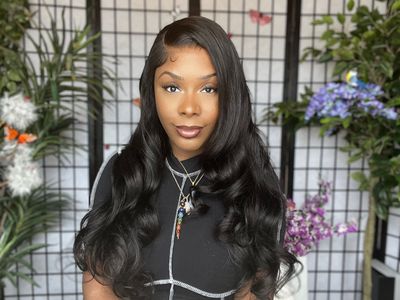How to Choose the Perfect Human Hair Wig for You

Human hair wigs offer a versatile and natural-looking solution for those seeking to enhance their appearance. The global market for these wigs is projected to reach USD 14.29 billion by 2032, driven by both fashion trends and medical needs. Understanding the origins, quality, and ethics of wigs human hair is crucial for making informed decisions. Factors such as hair length, color, and source significantly impact the cost and quality. Ethical considerations also play a vital role in ensuring fair practices in the industry. Brands like Luvmeforyou emphasize transparency and quality, making it easier to find human hair wigs near me.
Sources of Human Hair

Geographic Origins
Asia
Asia stands as a major source of human hair for wigs. Countries like India, China, and Vietnam dominate the market. Indian temples collect hair from religious rituals, where devotees shave their heads as an offering. This hair is often virgin and of high quality. Chinese hair, known for its strength, undergoes processing to suit various textures. Vietnamese hair, prized for its silkiness, comes from rural areas where women sell their long locks.
Europe
European hair, particularly from Russia and Ukraine, holds a premium status in the wig industry. This hair type is naturally fine and often light in color, making it ideal for customization. Russian hair, sourced from remote villages, maintains its natural state with minimal processing. Ukrainian hair, similarly, offers high quality and versatility, catering to diverse styling needs.
Other Regions
Other regions like South America and Africa contribute to the human hair market. Brazilian hair, known for its thickness and durability, appeals to those seeking voluminous styles. African hair, although less common, provides unique textures that cater to specific preferences. These regions add diversity to the global supply of human hair.
Types of Human Hair
Virgin Hair
Virgin hair refers to hair that has never undergone chemical treatments. This type retains its natural cuticle layer, ensuring longevity and a natural look. Virgin hair, often sourced from single donors, offers consistency in texture and quality. This makes it a preferred choice for premium human hair wigs.
Remy Hair
Remy hair maintains the cuticles aligned in one direction, reducing tangling and matting. This type undergoes minimal processing to preserve its natural state. Remy hair, often collected through ethical practices, provides a smooth and shiny appearance. This makes it a popular option for high-quality wigs.
Non-Remy Hair
Non-Remy hair lacks the uniform alignment of cuticles, leading to potential tangling. This type often comes from mixed sources, including salon waste. Non-Remy hair undergoes heavy processing to improve its appearance. Although more affordable, this type may require more maintenance compared to Remy or virgin hair.
Quality of Human Hair Wigs
Factors Affecting Quality
Hair Cuticle
The hair cuticle plays a crucial role in determining the quality of human hair wigs. A healthy cuticle layer ensures that the hair remains smooth and shiny. Properly aligned cuticles reduce tangling and matting, which enhances the wig's longevity. Virgin and Remy hair often retain their natural cuticle layers, making them superior choices for high-quality wigs.
Processing Methods
Processing methods significantly impact the quality of human hair wigs. Minimal processing preserves the natural state of the hair, maintaining its strength and texture. Chemical treatments, such as bleaching and dyeing, can weaken the hair fibers. Ethical brands like Luvmeforyou emphasize gentle processing techniques to ensure the hair's integrity. This approach results in wigs that look and feel more natural.
Maintenance and Care
Proper maintenance and care are essential for preserving the quality of human hair wigs. Regular washing with sulfate-free shampoos and conditioners helps maintain the hair's natural oils. Avoiding excessive heat styling prevents damage to the hair fibers. Storing the wig on a stand when not in use keeps it in shape and reduces tangling. Following these care tips can extend the lifespan of a human hair wig.
Pros and Cons of Human Hair Wigs
Advantages
Human hair wigs offer several advantages over synthetic alternatives. The natural look and feel of human hair provide a realistic appearance. The ability to style the wig using heat tools allows for versatility in hairstyles. With proper care, human hair wigs can last for years, making them a cost-effective investment. The natural sheen and texture of human hair cannot be replicated by synthetic fibers, adding to the wig's authenticity.
Disadvantages
Despite their benefits, human hair wigs also have some disadvantages. The initial cost of a human hair wig is higher compared to synthetic options. Human hair wigs require more maintenance to keep them looking their best. Exposure to environmental factors, such as humidity, can affect the wig's appearance. The need for regular styling and care may be time-consuming for some users.
Ethical Considerations
Ethical Sourcing
Donor Consent
Donor consent stands as a cornerstone of ethical sourcing in the human hair industry. Companies must ensure that donors willingly provide their hair. Many women, particularly in developing countries, face coercion or deceit. Ethical brands prioritize obtaining clear and informed consent from donors. This practice respects the autonomy and dignity of individuals.
Fair Compensation
Fair compensation remains crucial in promoting ethical sourcing. Many women receive minimal payment for their hair, despite its high market value. Ethical companies must provide fair wages to hair donors. This approach supports economic empowerment and reduces exploitation. Brands like Luvmeforyou emphasize fair trade practices, ensuring donors benefit from their contributions.
Industry Transparency
Certification and Standards
Certification and standards play a vital role in ensuring transparency. The human hair industry lacks uniform regulations, leading to inconsistencies. Implementing certification systems can help verify ethical sourcing practices. Organizations can establish standards for donor consent and fair compensation. Certified brands offer consumers assurance of ethical practices.
Consumer Awareness
Consumer awareness drives demand for ethically sourced products. Educating consumers about the origins of human hair wigs fosters informed choices. Transparent brands provide detailed information about their sourcing methods. Consumers can support ethical companies by choosing certified products. Increased awareness encourages industry-wide adoption of fair practices.
Understanding the origins, quality, and ethics of human hair wigs empowers consumers to make informed choices. High-quality wigs offer natural appearance and longevity. Ethical considerations ensure fair practices in the industry. Brands like Luvmeforyou emphasize transparency and quality.
"After researching many different wigs online, I found that a human hair wig flows the most naturally." — Kelly
Consider both quality and ethics when purchasing a wig. This approach ensures satisfaction and supports ethical industry practices.






















